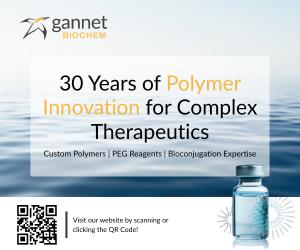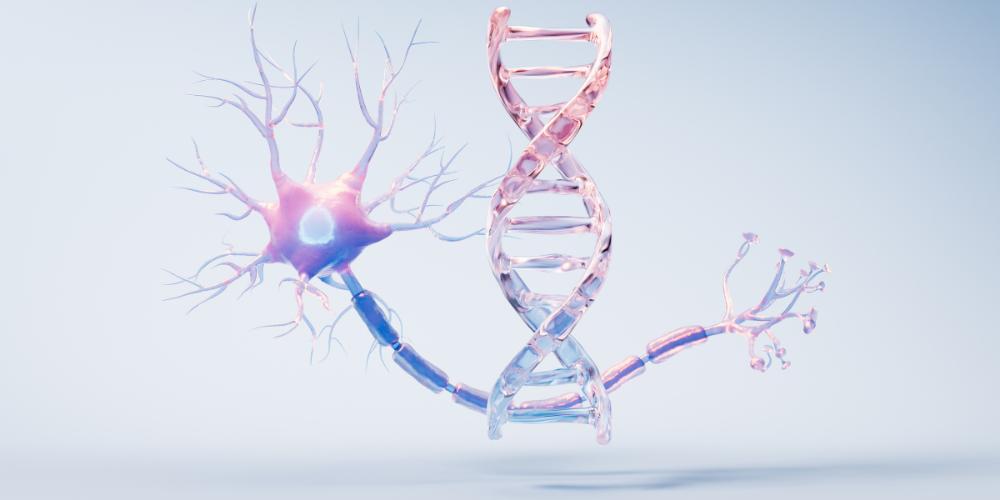
Tell us about the creation of the TransNAT Consortium and how you plan to use the grant money.
Everyone who works in this field recognizes that the major challenge is no longer a question of making a good oligonucleotide or siRNA drug but is around the question of delivery. This was a competitive funding call in the UK, requiring applicants to assemble a team with members both from academia and industry to rapidly translate new and effective methods for delivering drugs that can be tested in patients.
We need to go all the way from basic science to understand some of the questions as to how drugs behave inside cells to developing new technologies that can quickly and effectively be translated into clinical trials in patients. With that in mind, we put together a team that comprised expertise in the chemistry and biology of nucleic acid drugs, nucleic acid drug delivery, toxicology and safety to focus on delivery to high-challenge tissues including the muscle, heart and brain, in particular with hopes that there will be applications more broadly as well. As a result, we’ve put together a team from the UK, Sweden and the United States, with companies like AstraZeneca, Ionis Pharmaceuticals and Silence Therapeutics.
How has exosome delivery evolved since you first published a demonstration of exosome delivery of siRNA in 2011?
The platform has evolved in several ways over the last decade. First of all, there are many more people doing it. It has evolved to be utilized experimentally pretty widely by both academic groups and companies.
The other ways in which the technology has evolved is in terms of the engineering elements. When we first did this, we engineered exosomes to deliver gene silencing drugs, siRNAs. Other groups have extended that to the delivery of other types of drugs including gene editing drugs, antisense oligonucleotides and viruses, many of which are substantially bigger than the small nucleic acid drug we delivered. In terms of what can be packaged and delivered, that’s evolved quite a lot.
The other element that’s evolved is the targeting. We demonstrated this originally with a peptide that was derived from rabies virus to target the exosomes into the brain. This had now been extended to using peptides and antibodies engineered onto the exosomes to target particular receptors and tissues such as tumors.
How do we achieve efficient delivery of these oligonucleotides?
That’s the big challenge. There are a number of elements to the delivery that have not been addressed. There is a biological barrier to the target tissue, like the blood-brain barrier for example. Even if you get across the biological barrier into a tissue, then there’s the delivery to the particular type of cell you are interested in, for example, the neuron. And perhaps the most important part is to get your payload delivered to the right place in the cell. When these drugs enter cells, they probably end up in the endosomal compartment while they ultimately need to be in the cytoplasm or nucleus to be effective.
There is a lot of work to be done to understand how to get the drugs themselves targeted to the right part of the cell where they can be active. We need to engineer the delivery vehicles to deliver the drugs to the right part of the cell to improve delivery efficiency and avoid some safety concerns that arise. My own team is working on exactly this last problem of trying to understand how to effectively deliver the drugs to the right part of the cell.
"We need to engineer the delivery vehicles to deliver the drugs to the right part of the cell to improve delivery efficiency and avoid some safety concerns that arise."
Do you have any advice on how people should think about delivering these payloads to the right part of the cell?
Cells are full of nucleic acids and there are entire classes of proteins that attach to nucleic acid drugs. For example, there are thousands of RNA binding proteins. We need to understand which RNA binding proteins are critical to facilitate the delivery of our drugs to the right part of the cell, as well as how the drug may interact with other RNA binding proteins. Which of those interactions could be beneficial? Which could be deleterious and lead to toxicities or undesirable effects? This detailed intracellular biology and its impact on the trafficking of drugs is not very well understood. Our current program focuses on the cellular mechanisms that transfer drugs to different parts of the cell and how we can engineer our drugs to more effectively take advantage of them.
Are the safety issues more on the side of immunogenicity of the delivery system or off-target effects from the nucleic acid therapy?
Thus far, immunogenicity has not been a major issue. This could be because we don’t necessarily recognize it as a major problem in preclinical studies, but I think we are more concerned by off-target effects. We’re trying to understand to what extent those effects are due to your oligonucleotide ending up in the wrong part of the cell. Often when we think about off-target effects, we just look at the sequence of the drug and ensure there are no other binding sites in the genome. But we haven’t really thought about what happens if that drug accumulates in a part of the cell, it shouldn’t have potential undesirable effects.
How can we navigate the dense web of IP in relation to cell & gene delivery?
It’s hard to put together a big international team like this without IP issues causing problems. While this consortium is pre-competitive and we are doing new science to discover the biology of how drugs behave inside cells, we still plan on taking certain well-established approaches including lipid-based systems for delivery. With all of the companies working in this space, there is a vast archive of patents related to lipid delivery that can be an IP minefield.
In our case, we’ve tried to solve a lot of the issues at the outset by negotiating agreements between all of the partners in anticipation of potential IP problems, rather than try to solve them retroactively after doing all of the work and generating new data. Having said that, there is so much IP out there that even academics need to act like biotech companies by meeting with tech transfer and patent lawyers before starting experiments to inform us on how to go about doing the work and how to generate data in a way that can ultimately be protected.
What do you look for in companies when deciding whether to advise or partner with them?
I am excited by the extent to which the technology is likely to be game-changing. By that I mean differentiation from anything that currently exists. For example, Evox Therapeutics, which uses exosomes delivery for protein and nucleic acid-based therapies, isn’t guaranteed to be a huge success. There is a lot of work to do to realize the potential of their technology. But if they are successful, it will be completely unlike anything any other company is developing. I don’t particularly want to work on things that are just iterative or additive. I want to work on game changing technology.
The other element is the team. However good the technology is, the team that develops it and makes the critical decisions about how to prove it works is fundamental to success. Many companies try to prove their technologies the wrong way. These technologies can take five to ten years of work to bring those technologies to clinical studies in patients. I am always keen to work with a very good team that can do that work.
"This is where you need computational capabilities and machine learning to guide you as to how to combine the best features of a lipid nanoparticle and an exosome or an antibody and a peptide without needing to do thousands of experiments."
How do you see the field of oligonucleotide delivery evolving in the next five to ten years?
There are some really good examples of these drugs working well in the nervous system, like in spinal muscular atrophy for example. There is no doubt that these drugs have a place. In the next five to ten years, we will see examples of these drugs effectively delivered to places outside the liver. Perhaps we’ll see intravenous or subcutaneous delivery of these therapies to the brain in about ten years’ time. Until then, I think we will see examples of delivery to the lung and kidney and immune system, including some approved therapies.
The other thing I’m expecting is to see a convergence between these different delivery technologies. At the moment there are groups working on lipid nanoparticles, exosomes, peptides and antibodies, etc. I think we will see convergence within those buckets like lipid nanoparticles getting slightly more complex and incorporating features from exosomes like using antibodies to better target those lipids to certain cells or tissues. We’re also looking at ways of combining peptides with lipids to create lipopeptides.
This is where you need computational capabilities and machine learning to guide you as to how to combine the best features of a lipid nanoparticle and an exosome or an antibody and a peptide without needing to do thousands of experiments.
Anything else?
This is a very fast-moving field. Five years ago, it wasn’t obvious that these technologies would converge or that we’d make progress this quickly or that there would be such an obvious role for AI and machine learning to play a role in the future development of nucleic acid drugs. It’s so obvious now that we have a computational biology team incorporated in the TransNAT Consortium as well. This is going to be an important part of every kind of scientific program we begin in the future.








